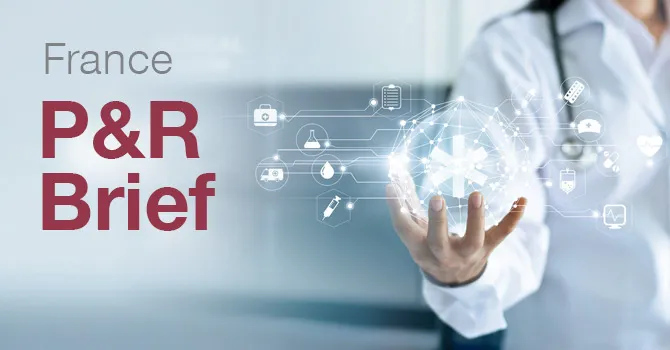Two new policies were implemented in France this year changing pricing and market access for pharmaceuticals. Experts Diane Cosset, Charles Hoffman-Martinot, and Igor Seban outline what this means for manufacturers.
Healthcare is changing in France. In line with the country’s “Healthcare Innovation Plan 2030” two new policies have been announced which are changing pricing and market access. The first policy is a new decree that provides broader access to expensive drug coverage in hospitals. And the second is a new pricing policy for orphan drugs.
In this brief, we outline the new policies and explain what effects they will have on France’s healthcare industry.
Broader access to expensive drug coverage in hospitals (T2A excl. list)
Among French hospitals, marketing authorized drugs are, in principle, covered within the Diagnosis-Related Groups (DRG) system. However, when DRG tariffs are insufficient, drugs can benefit from a pass-through system called the T2A exclusion list. This then provides broader access to expensive drug coverage in hospitals.
Prior to the new decree, drugs had to meet four cumulative criteria defined by law for eligibility:
- The treatment setting (mostly inpatient).
- The SMR rating (important), which determines the medical benefit of pharmaceuticals.
- The ASMR rating (I-III), which determines the improvement of said medical benefit.
- The cost of drugs (above 30 percent of the DRG tariff).
Within this context, products rated ASMR IV and V could only be included if the indication considered was in the interest of public health.
What’s more, these are only eligible if there’s already a comparator included in the T2A exclusion list, or if there isn’t a relevant comparator available in the market. Access to this list has therefore been increasingly challenging as fewer and fewer products reach ASMR levels I to III.
The new decree, announced by French President Emmanuel Macron at the end of the ninth Strategic Council for Health Industries (CSIS) meeting, now extends the scope of eligible drugs to products rated ASMR I to IV.
Similar to the previous rule, ASMR V drugs remain eligible if comparators are already included on the list. This new framework has been effective since January 1st, 2022 and is “retro-active” so that past ASMR IV products can request to be included in the T2A exclusion list.
The opening of the T2A exclusion list to ASMR IV products represents a real opportunity for manufacturers, but the resulting budget impact may lead to a more dynamic management of the list with more delisting.
The Pricing Committee’s (CEPS) new pricing policy for orphan drugs
An addendum to the accord-cadre (framework agreement for drug price regulation) focusing on orphan drugs was published on April 6th, 2022. The addendum provides a special status for orphan drugs with respect to comparator selection, budget cap usage, and involvement of medical experts.
Price comparator considerations in the case of ASMR I to IV
For orphan drugs rated ASMR I to IV vs. the therapeutic strategy, price benchmarks must have a marketing authorization in the indication of interest. Loss of exclusivity products such as generics and/or biosimilars are excluded. ASMR V products will not benefit from this exception.
For orphan drugs rated ASMR V, the new addendum clarifies that savings will be based on the net negotiated price (and not necessarily the list price), so offering an opportunity for a list-to-net differential (which is not applicable for ASMR V products in principle).
A budget cap may be negotiated by both parties in case an agreement isn’t reached
If the annual cost per patient exceeds €50,000, the CEPS or the manufacturer may consider a capping based on annual revenues to treat patients while considering a list price in line with other countries.
This agreement should also define conditions that trigger a reassessment of the financial capping, such as sales volumes, new targeted population (as re-assessed by the Transparency Committee), or any other information from relevant databases (e.g., from a registry, epidemiological data, or medico-administrative databases).
As part of the negotiation, manufacturers can request a hearing of medical experts
In that case, experts should be involved in reference centers / networks as per the National Plans for Rare Diseases.










